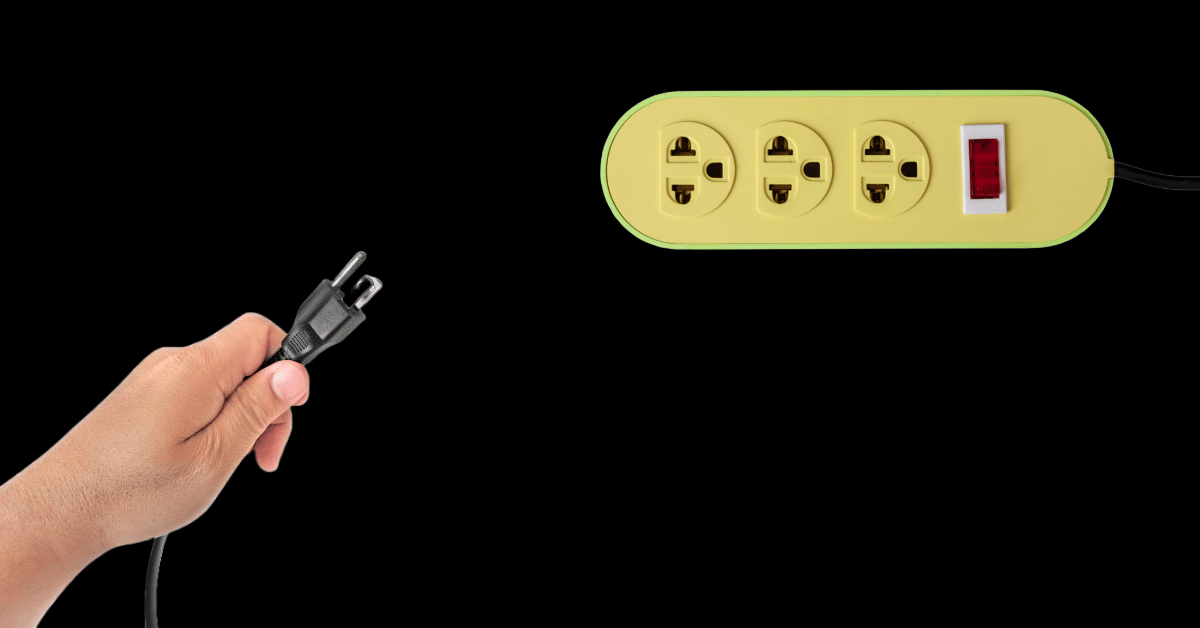
Everybody loves an underdog, especially when the underdog is a challenger brand gunning for a shot at the status quo.
Once reserved for startups with little budgets and big dreams, the “Challenger Strategy” has officially gone mainstream, and is being adopted by billion dollar brands (Walmart is giving fashion influencer. Heineken’s making skincare. Doritos is obsessed with triangles???). In a world of sameness and slow playbooks, bold, weird, and fast is what wins. Let’s unpack why the big dogs are suddenly picking fights, and how you can, too.
-Sophie Randell, Writer
Want the secret sauce for running paid ads that actually sell?

Join us for a 90-minute workshop that replaces guesswork with a step-by-step setup for profitable campaigns that turn scrolls into sales.
In this session, you’ll learn:
✅ What to post, how often, and in which format (templates included!)
✅ How to set up your first (or next) campaign so it’s built to convert
✅ The one thing every successful campaign gets right
✅ How to track what’s working & tweak what’s not
PLUS The latest best practices for Meta ads in 2025.
Ask questions. Get answers. Leave ready to grow your sales and scale your business.
Wednesday, 30 July | 8:30–10:00am NZT | $59 NZD
WHAT’S HAPPENING IN MARKETING TODAY?
France bans fast fashion, quitting social media makes you happier & YouTube shorts dwarfs TikTok in views

France just made influencing fast fashion a crime.
Not just because it’s gross. But because the social and environmental consequences are undeniable at this point. It’s no secret that influencers have accelerated the demand for fast fashion. With brands like Shein and Temu releasing thousands of new items weekly, influencers have become the primary route to market. And France has said NOT ON MY WATCH.
Under the new law, advertising for ultra-fast fashion brands (like Shein and Temu) is banned across all platforms. So, influencers who have been driving sales through haul videos, affiliate links, and branded partnerships can no longer do so legally.
This is the first time any country has directly linked online influence to environmental harm, and in doing so, asks creators to take a long hard look at what they promote and why. 10/10 from me.
Stanford paid 35,000 people to find out if quitting Instagram makes you happier.
In one of the largest randomised controlled trials surrounding social media and mental health, Stanford University has officially ruled what we all know (but probably don’t want to admit): deactivating social media has significant benefits for your mental health.
While the study was conducted leading up to the 2020 election, the results were finally released last week.
“We estimate that quitting Facebook or Instagram for the five weeks before the 2020 election, compared with using social media normally, modestly improved an index of people’s self-reported happiness, anxiety and depression.” Professors at Stanford University Hunt Allcott and Matthew Gentzkow reported.
While many studies have been conducted highlighting the correlation between social media and poor mental health, this is the most comprehensive evidence yet.
Read the full report here.
YouTube Shorts absolutely dwarf TikTok with 200 times the daily views.
YouTube CEO Neal Mohan has announced that Shorts are currently racking up an insane 200 billion views EVERY DAY, outshadowing the once undisputed champion of shortform: TikTok. The numbers are nearly three times the 70 billion daily views Shorts was pulling a year ago, that’s a 168% surge.
Creators/ brands/ marketers: you know what to do. If you’re not there already, you need to be.
-Sophie Randell, Writer
DEEP DIVE
Why major brands are suddenly acting like underdogs

Inside the rise of the challenger strategy, and how to pull one off yourself.
Once upon a time, "challenger brands" were the scrappy underdogs. Dollar Shave Club shaking up Gillette. Oatly vs. Big Dairy. These brands enitre identities are built around being not-the-market-leader, which made them nimble, daring, and emotionally resonant.
However, now the big dogs want in (yawn, of course.)
The challenger strategy is officially no longer just for startups. It’s a mindset. And major players like Walmart, Heineken, even Procter & Gamble, are adopting it fast.
Why? Because the old playbook is slow to work these days. Inflation, AI anxiety, and post-pandemic fatigue have changed the way people spend, shop, and show loyalty. Consumers want brands that feel alive, adaptive, creative, and unafraid to take a stand (or take the piss.)
So, what is a challenger strategy, really?
At its core, it’s about behaving like a disruptor, regardless of size. Challenger brands often question category norms, flip expectations, and take bold creative risks to win attention and relevance.
Instead of selling a product, they’re reframing the problem and poking the bear.
Now, we’re seeing legacy brands borrow those moves. Because in a world of economic uncertainty and overstimulation, safe is forgettable…and boring doesn’t convert.
There are a few brands that just get it:
Heineken turned a fake men's skincare line into a real product: “Heineken Smootheriser” trolling beauty culture while promoting moderation and rethinking masculinity. A total category zag.
Walmart - yes, Walmart - is using fashion as a Trojan horse to reshape its brand. With a rebranded look, buzzy collabs, and a CMO straight out of Vogue’s Rolodex, they’re not just competing with Target; they’re challenging your assumptions about value and style.
PepsiCo’s snack brand Doritos launched a digital triangle tracker and stealth marketing campaign for its iconic shape—not the flavor, not the crunch, but the geometry. Weird? Yes. But impossible to ignore.
Challenger thinking is about unpredictability, distinctiveness, and culture fluency. It says, “We know what you expect. And we’re not giving it to you.”
Want to challenge the status quo? Here’s how:
1. Identify your enemy (even if it’s an idea).
Challenger brands thrive when they’re up against something bigger: an outdated belief, a broken system, a bloated competitor. Your enemy doesn’t have to be a rival. It can be apathy, sameness, waste, boredom. Choose your fight.
2. Take creative swings.
This isn’t the time for beige campaigns. Challenger strategy demands standout ideas that cut through noise. Embrace humor, surrealism, contradiction, whatever your audience isn’t expecting.
3. Be fast, not perfect.
Legacy brands are learning from startups: speed matters more than polish. A lo-fi idea with cultural heat beats a six-month cross-platform rollout that lands flat.
4. Don’t just advertise, agitate.
Challengers don't just sell products; they provoke thought, shift perceptions, and stir things up. Think less “how do we promote this?” and more “how do we reframe the conversation?”
5. Build community, not just campaigns.
Challenger brands treat their audience like insiders. Give people a role, a reason to care, and a way to join in… because belonging builds loyalty.
The truth is, today’s consumer is already a freaking challenger. They're price-savvy, skeptical, and constantly recalibrating. If your brand looks, sounds, and behaves like it always has, you’re probably going to get left behind. Tata. Bye for now.
In this climate, acting like the underdog might just be the boldest power move of all.
-Sophie Randell, Writer
TREND PLUG
Worth more than diamond, more than gold

Polaroids, Tumblr, Supreme, 2016 has never been more back! Sia is back in the mix with her smash hit (and my phone ringtone when i was 14) Cheap Thrills (Remix) featuring Sean Paul.
TikTokers are taking the lyrics "I don't need no money, you are worth more than diamond, more than gold" and turning it into an easy-win two-pic carousel.
First pic, a selfie with the text saying I don't need no money. Second pic, being someone/something irreplaceable with text over it saying "You are worth more than diamond, worth more than gold"
Examples include:
Coke (the drink you freaks)
How you can jump on this trend:
To the sound, use one picture of yourself as the first, and another picture of you with someone irreplaceable as the second slide and write the lyrics on each respective slide! Ta da!
A few ideas to get you started:
ChatGPT
Premiere Pro
Tripod
- abdel khalil, brand & marketing executive
FOR THE GROUP CHAT
😂Yap’s funniest home videos: When you overreact and fail anyway 😂
✨Daily inspo: the fear of being alone
🎧Soooo tingly: ASMR Hotel
🍝What you should make for dinner tonight: Cheesy Taco potato Skillet
TODAY ON THE YAP PODCAST
Want even more “YAP”ing? Check out the full podcast here.
ASK THE EDITOR

How do you recommend coming up with the content ideas? I want to build followership but also build my brand. -Ina
Hey Ina!
The reason you can't come up with ideas is that you haven't identified your core human truth. When our team plans content, we're not brainstorming random ideas - we're exploring the human truth behind the brand and how it can be expressed on platform. Your content series will naturally emerge once you understand the fundamental human insight you're trying to communicate.
When you focus on finding that truth, the content ideas will flow naturally. The key is to connect with a deeper, meaningful narrative that speaks to your potential clients' experiences and needs.
- Charlotte Ellis, Editor ♡